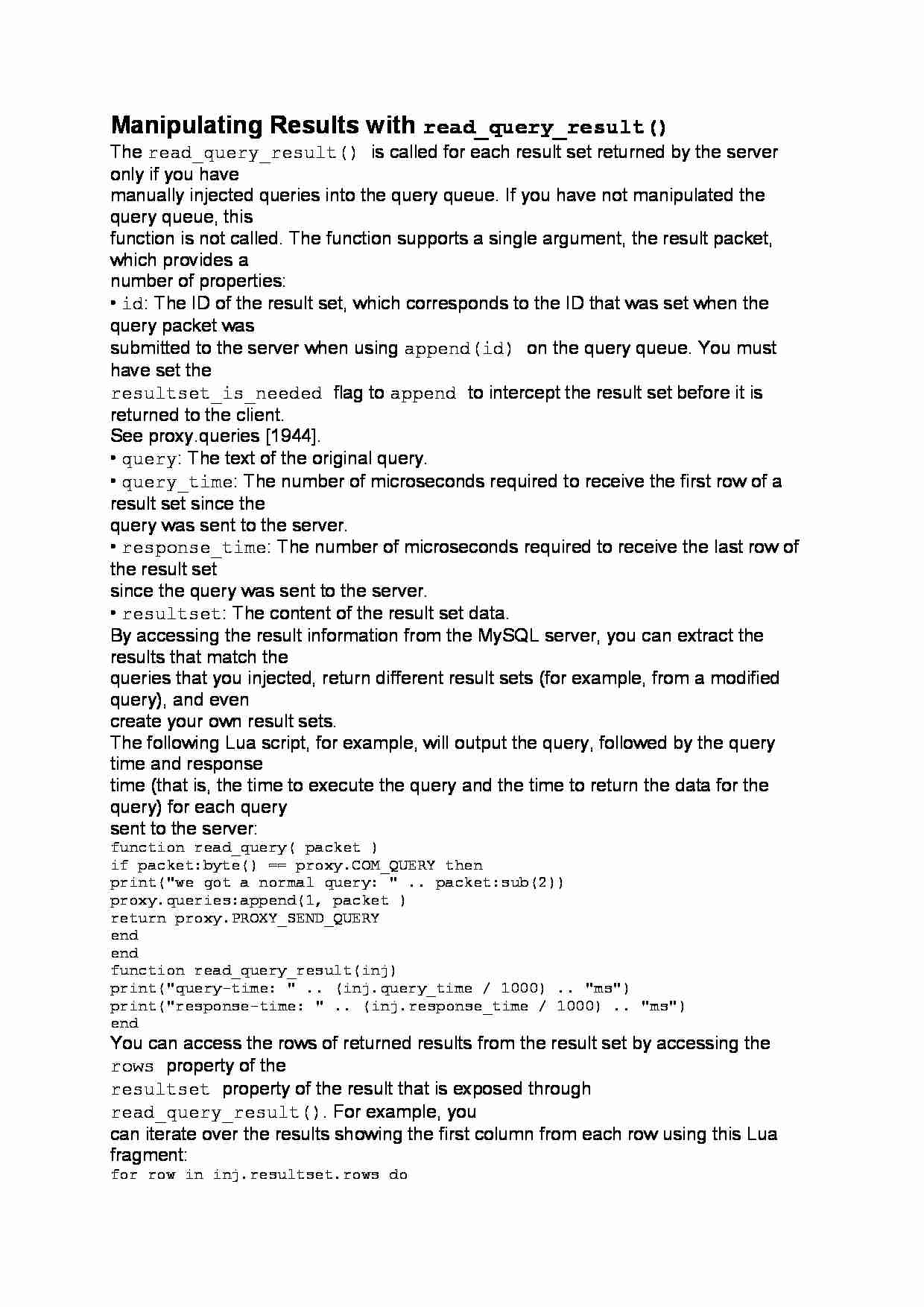To tylko jedna z 2 stron tej notatki. Zaloguj się aby zobaczyć ten dokument.
Zobacz
całą notatkę


Manipulating Results with read_query_result()
The read_query_result() is called for each result set returned by the server only if you have
manually injected queries into the query queue. If you have not manipulated the query queue, this
function is not called. The function supports a single argument, the result packet, which provides a
number of properties:
• id: The ID of the result set, which corresponds to the ID that was set when the query packet was
submitted to the server when using append(id) on the query queue. You must have set the
resultset_is_needed flag to append to intercept the result set before it is returned to the client.
See proxy.queries [1944].
• query: The text of the original query.
• query_time: The number of microseconds required to receive the first row of a result set since the
query was sent to the server.
• response_time: The number of microseconds required to receive the last row of the result set
since the query was sent to the server.
• resultset: The content of the result set data.
By accessing the result information from the MySQL server, you can extract the results that match the
queries that you injected, return different result sets (for example, from a modified query), and even
create your own result sets.
The following Lua script, for example, will output the query, followed by the query time and response
time (that is, the time to execute the query and the time to return the data for the query) for each query
sent to the server:
function read_query( packet )
if packet:byte() == proxy.COM_QUERY then
print("we got a normal query: " .. packet:sub(2))
proxy.queries:append(1, packet )
return proxy.PROXY_SEND_QUERY
end
end
function read_query_result(inj)
print("query-time: " .. (inj.query_time / 1000) .. "ms")
print("response-time: " .. (inj.response_time / 1000) .. "ms")
end
You can access the rows of returned results from the result set by accessing the rows property of the
resultset property of the result that is exposed through read_query_result(). For example, you
can iterate over the results showing the first column from each row using this Lua fragment:
for row in inj.resultset.rows do
print("injected query returned: " .. row[1])
end
Just like read_query(), read_query_result() can return different values for each result
according to the result returned. If you have injected additional queries into the query queue, for
example, remove the results returned from those additional queries and return only the results from the
... zobacz całą notatkę




Komentarze użytkowników (0)